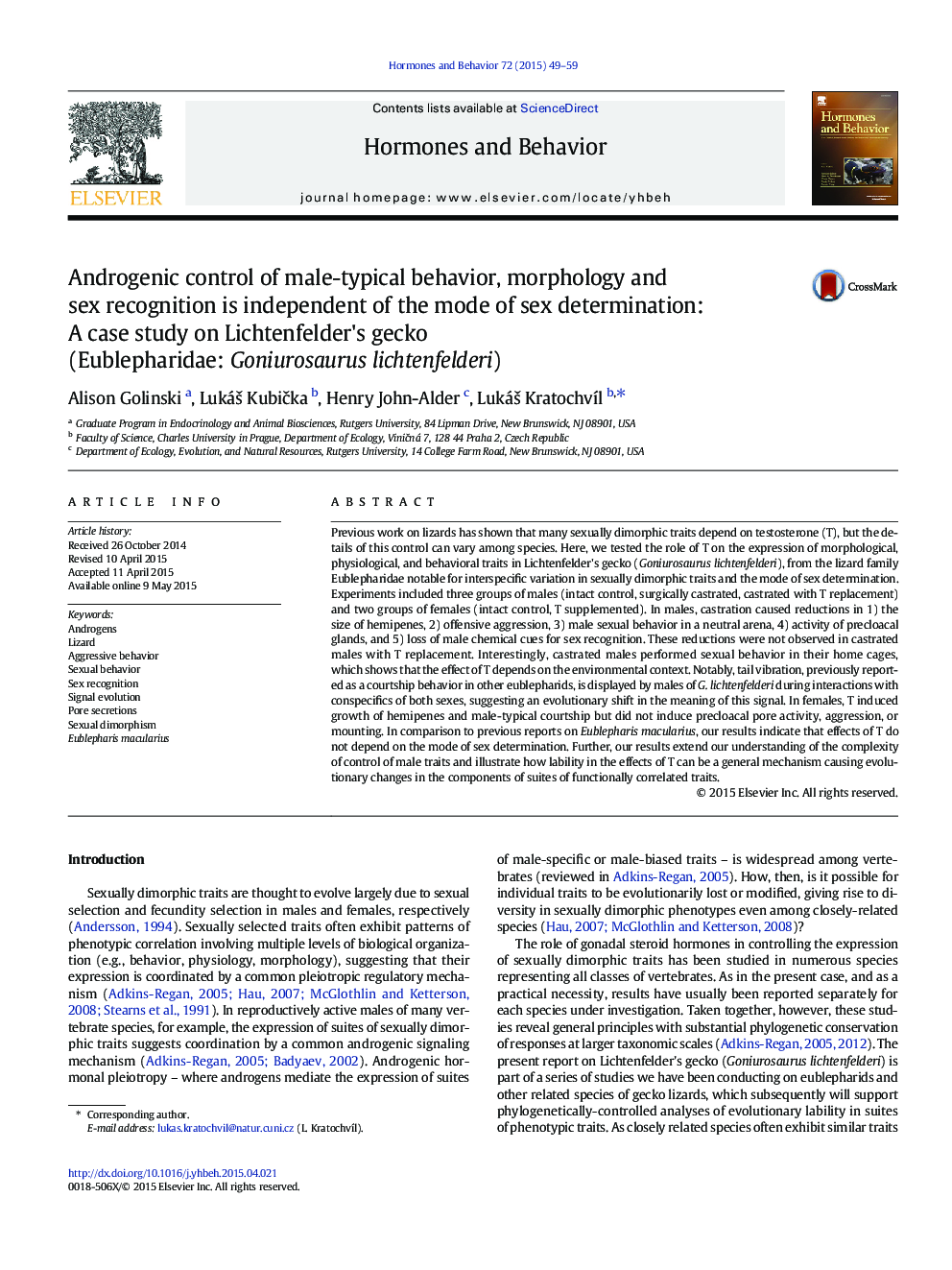| کد مقاله | کد نشریه | سال انتشار | مقاله انگلیسی | نسخه تمام متن |
|---|---|---|---|---|
| 323392 | 540634 | 2015 | 11 صفحه PDF | دانلود رایگان |

• Male castration reduced aggression, hemipenes, and scent glands in the gecko.
• Chemical cues used for sex recognition were feminized in castrated males.
• Male sexual behavior vanished in a neutral arena, but not in home cages in castrates.
• Not all male traits were induced by exogenous testosterone in females.
• An ancestral courtship signal likely changed meaning in the studied species.
Previous work on lizards has shown that many sexually dimorphic traits depend on testosterone (T), but the details of this control can vary among species. Here, we tested the role of T on the expression of morphological, physiological, and behavioral traits in Lichtenfelder's gecko (Goniurosaurus lichtenfelderi), from the lizard family Eublepharidae notable for interspecific variation in sexually dimorphic traits and the mode of sex determination. Experiments included three groups of males (intact control, surgically castrated, castrated with T replacement) and two groups of females (intact control, T supplemented). In males, castration caused reductions in 1) the size of hemipenes, 2) offensive aggression, 3) male sexual behavior in a neutral arena, 4) activity of precloacal glands, and 5) loss of male chemical cues for sex recognition. These reductions were not observed in castrated males with T replacement. Interestingly, castrated males performed sexual behavior in their home cages, which shows that the effect of T depends on the environmental context. Notably, tail vibration, previously reported as a courtship behavior in other eublepharids, is displayed by males of G. lichtenfelderi during interactions with conspecifics of both sexes, suggesting an evolutionary shift in the meaning of this signal. In females, T induced growth of hemipenes and male-typical courtship but did not induce precloacal pore activity, aggression, or mounting. In comparison to previous reports on Eublepharis macularius, our results indicate that effects of T do not depend on the mode of sex determination. Further, our results extend our understanding of the complexity of control of male traits and illustrate how lability in the effects of T can be a general mechanism causing evolutionary changes in the components of suites of functionally correlated traits.
Journal: Hormones and Behavior - Volume 72, June 2015, Pages 49–59